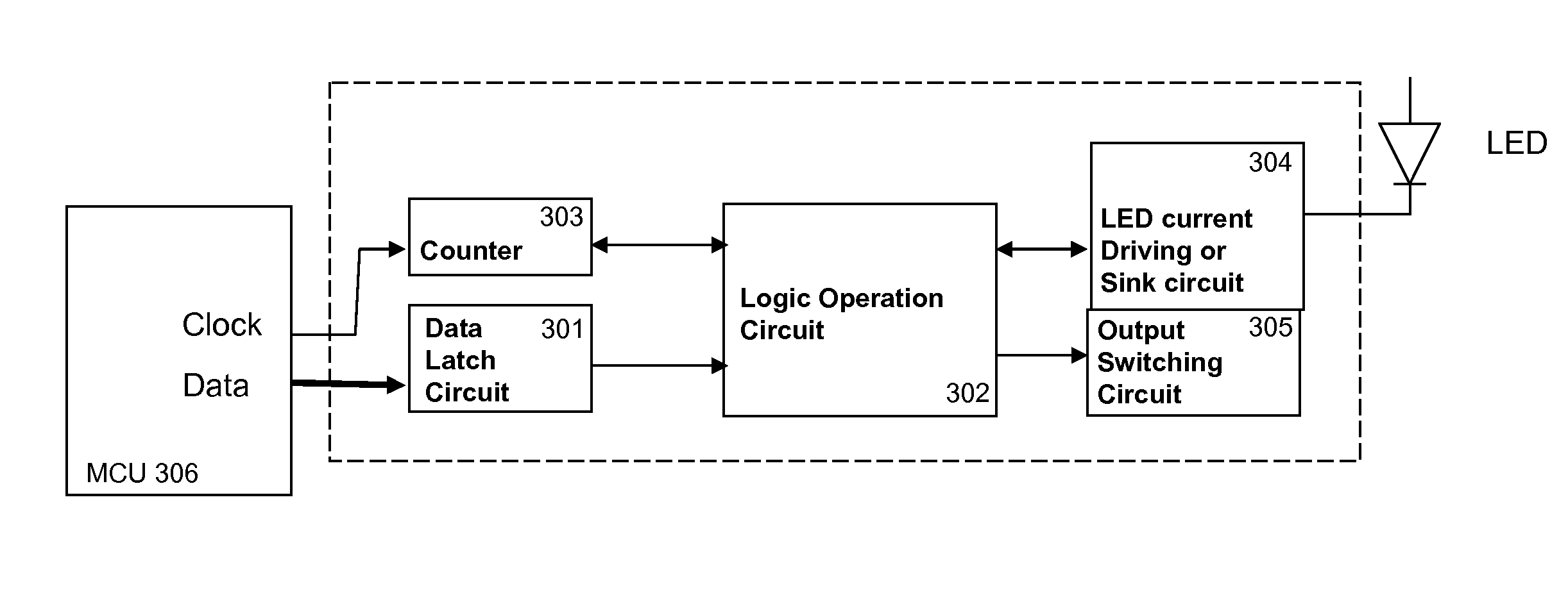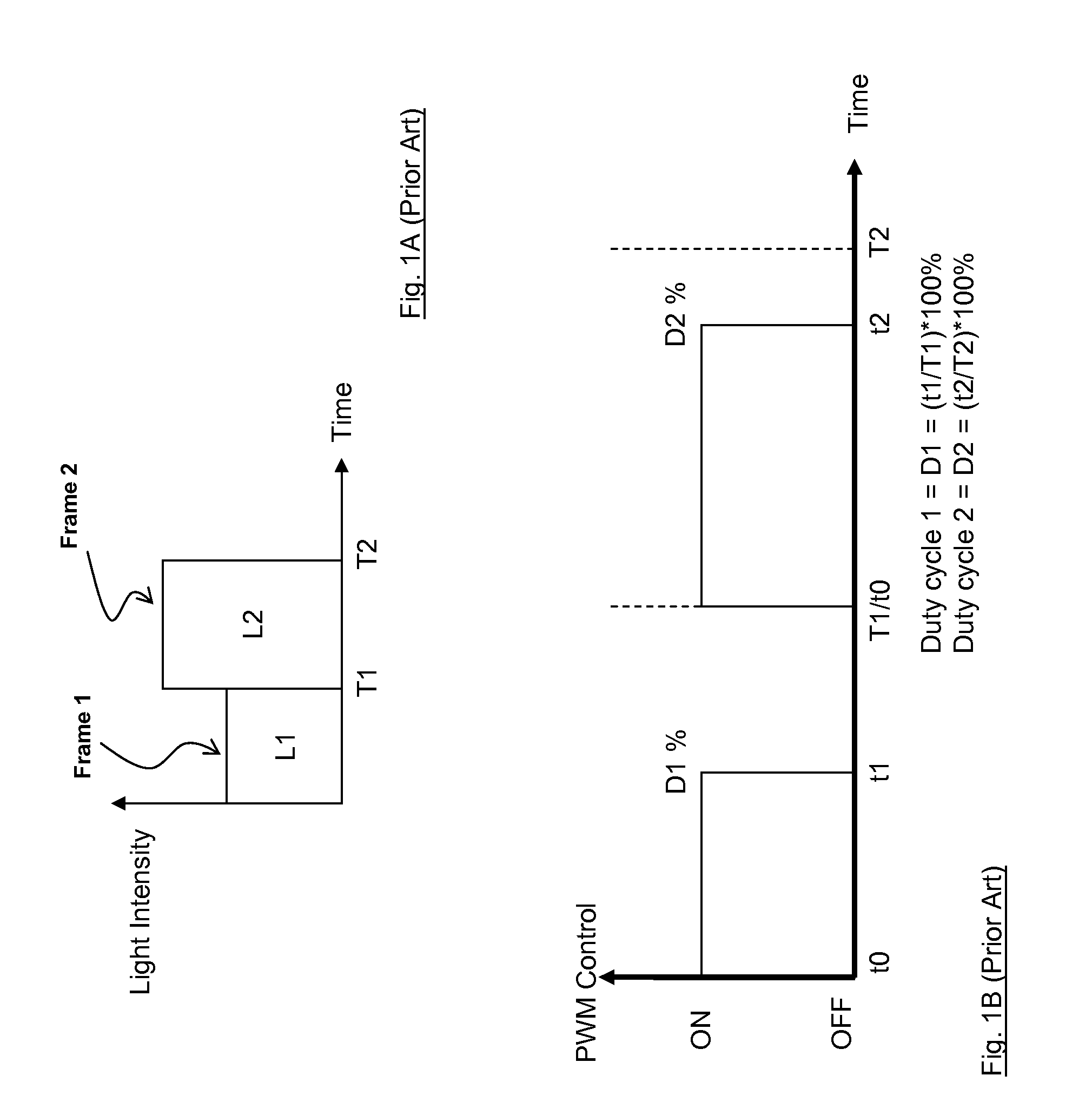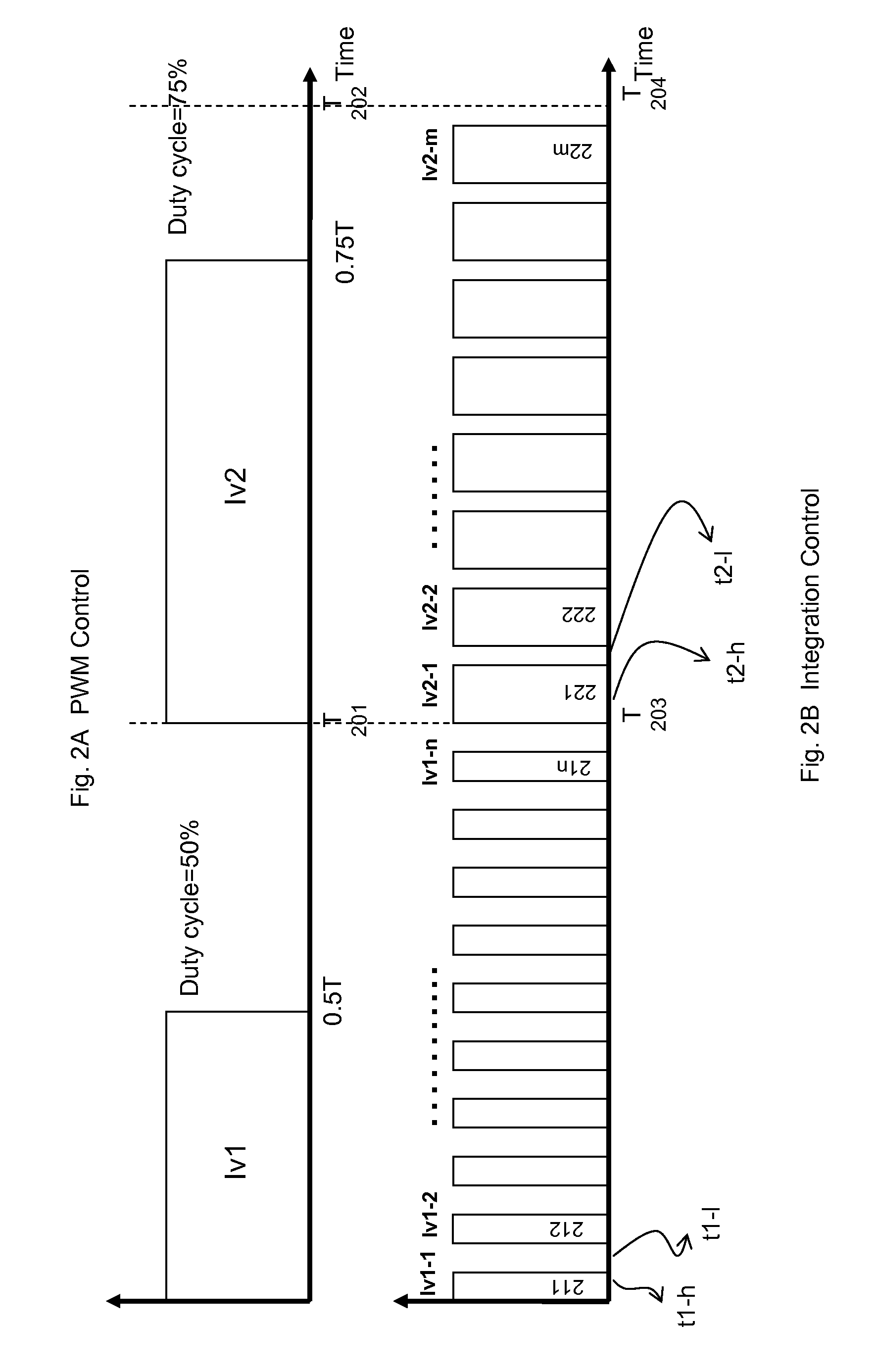Self-calibrated integration method of light intensity control in LED backlighting
a technology of intensity control and led backlighting, which is applied in the direction of static indicating devices, optical radiation measurement, instruments, etc., can solve the problems of led lighting capability degrading through its life span, reduce wavelength and luminance shifting, increase or maintain led life span and lighting quality, and reduce heat and junction temperature generated during the time when leds are turned on.
- Summary
- Abstract
- Description
- Claims
- Application Information
AI Technical Summary
Benefits of technology
Problems solved by technology
Method used
Image
Examples
Embodiment Construction
Terminology and Lexicography:
[0015]Latching: The function of receiving data from a data bus and storing the data in a register or memory.
Frame Time: The time period of displaying an image on a displaying system. A common practice of the Frame Time is 1 / 60 seconds although the Frame Time may be implemented differently for various application requirements.
2bd: Two (2) to the power of bd, wherein bd is an integer.
[0016]The PWM technology has been conventionally implemented to control the LED backlight brightness. The FIG. 1A shows the desired image light intensity L1 and L2 in the frame time T1 and T2. The FIG. 1B shows the PWM control on the L1 and L2 as illustrated by the FIG. 1A. For the frame time T1, the control signal generated by a MCU (306) turns on the LED from time t0 to t1 and turns off the LED for rest of the time within T1 frame time. The t1, or the Duty Cycle (D1) determines the light intensity of frame 1. The t2, or the Duty Cycle (D2), determines the light intensity of ...
PUM
 Login to View More
Login to View More Abstract
Description
Claims
Application Information
 Login to View More
Login to View More - R&D
- Intellectual Property
- Life Sciences
- Materials
- Tech Scout
- Unparalleled Data Quality
- Higher Quality Content
- 60% Fewer Hallucinations
Browse by: Latest US Patents, China's latest patents, Technical Efficacy Thesaurus, Application Domain, Technology Topic, Popular Technical Reports.
© 2025 PatSnap. All rights reserved.Legal|Privacy policy|Modern Slavery Act Transparency Statement|Sitemap|About US| Contact US: help@patsnap.com



